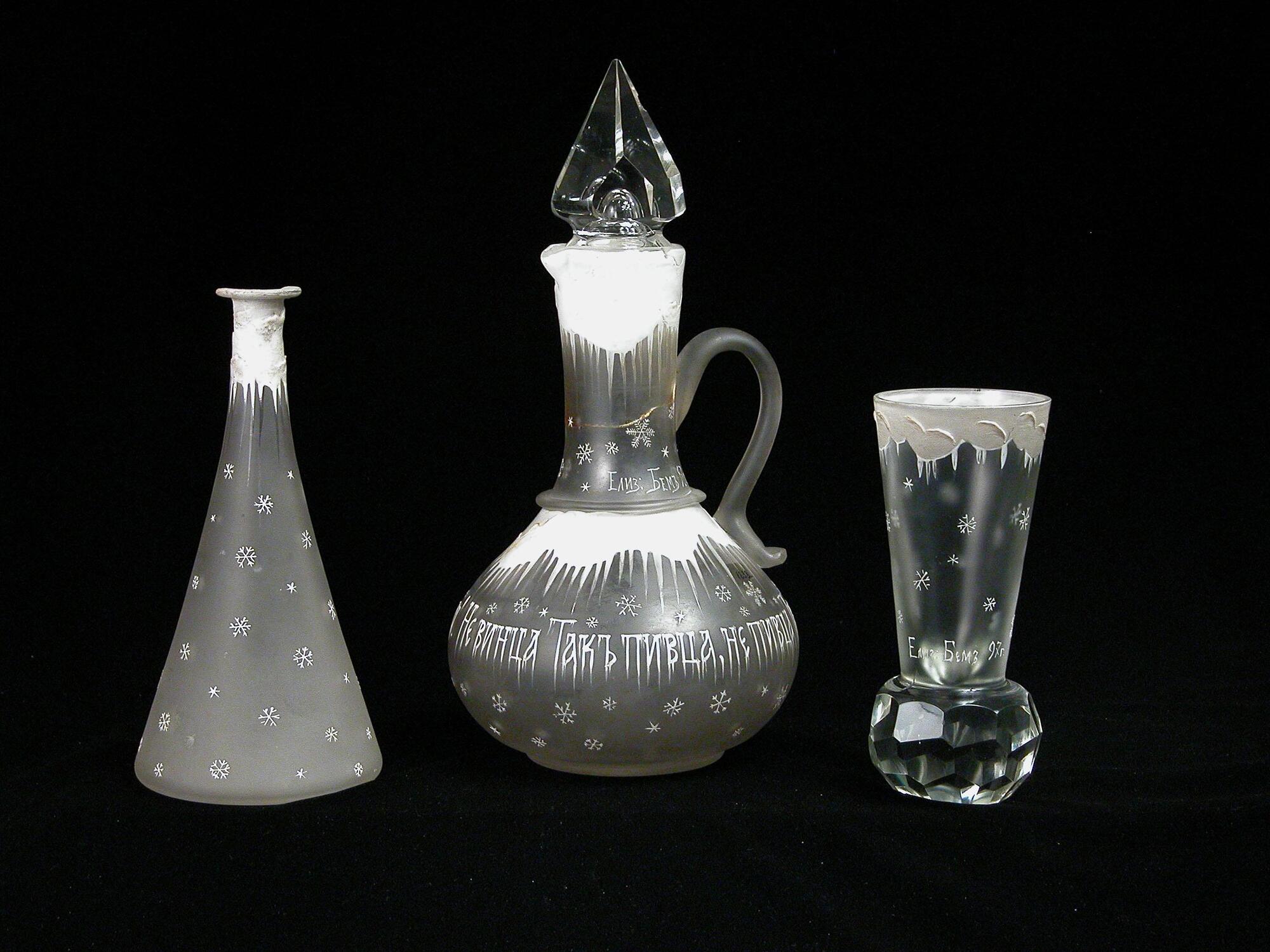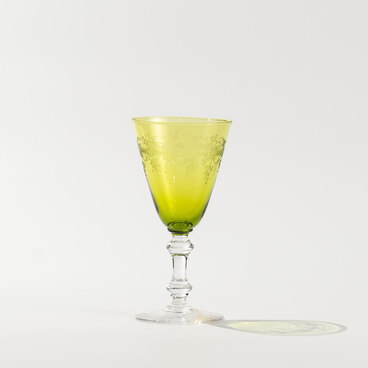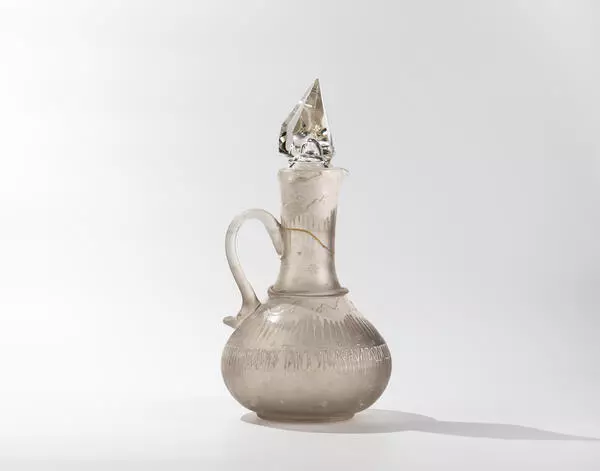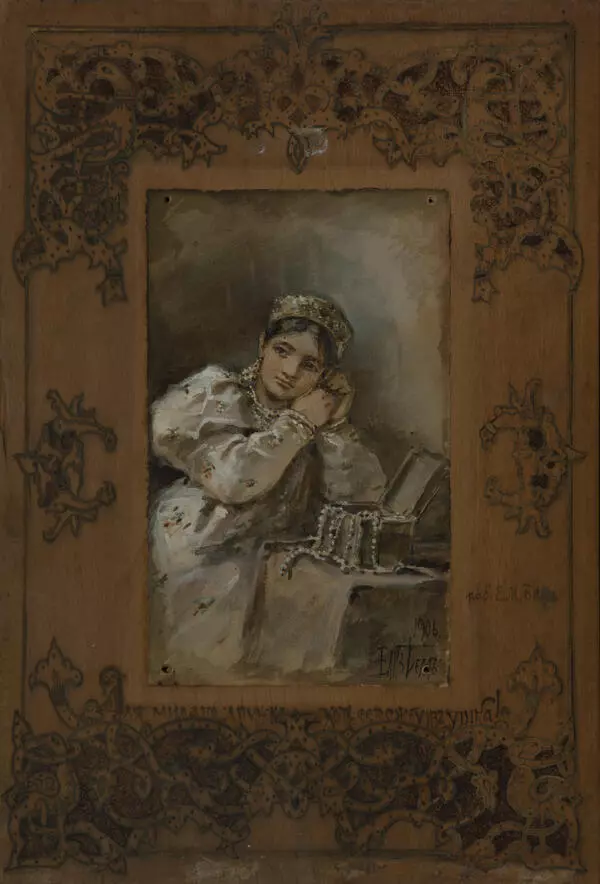The “Winter” set was designed by Elizaveta Boehm. She started working with the Dyatkovo Crystal Factory thanks to her brother Alexander Endaurov. As a process engineer, he contributed greatly to improving the factory’s technologies and even designed some of its products. Visiting her brother and the Crystal Factory, Elizaveta Boehm became fascinated with the magical transformations of glass and its creative potential and designed her best works in glass art. Her success is demonstrated by the medals she received at the exhibitions in Chicago and Paris. She designed a collection of crystal items at the Dyatkovo Crystal Factory for the woman’s section of the exhibition. Two medals were received from Chicago: one for Elizaveta Boehm, and the other one for the factory. The artist was awarded a Gold Medal at the exhibition in Paris, and a Silver Medal in Brussels. She also presented her works at the exhibitions of the Ladies Art Circle in Saint Petersburg and at the All-Russian Exhibition in Moscow.
The set includes a pitcher, a decanter, and a glass. The items were created using the blowing technique, decorated with etching and subsequent painting with a high enamel. The items in this set seem to have grown out of a thick ice sheet. This is emphasized by the stopper of the decanter and the base of the glass which resemble ice crystals with bubbles frozen inside. The frosted and seemingly foggy surface of items is painted with finely detailed snowflakes.
In the 19th century, the works of Elizaveta Boehm were not included in the factory’s price lists and were produced in limited edition, but nevertheless gained widespread popularity. This can be explained not only by their exceptional artistic merits but also by the fact that they offered a romantic interpretation of the past and were unmistakably Russian. Elizaveta Boehm achieved great success because her art was based on detailed study and a deep understanding of folk art and the legacy of Dyatkovo blowers.
Elizaveta Boehm became the first professional artist who used local traditions, her own talent, and the history of international art to develop a new direction in the work of the Dyatkovo Crystal Factory.
The set includes a pitcher, a decanter, and a glass. The items were created using the blowing technique, decorated with etching and subsequent painting with a high enamel. The items in this set seem to have grown out of a thick ice sheet. This is emphasized by the stopper of the decanter and the base of the glass which resemble ice crystals with bubbles frozen inside. The frosted and seemingly foggy surface of items is painted with finely detailed snowflakes.
In the 19th century, the works of Elizaveta Boehm were not included in the factory’s price lists and were produced in limited edition, but nevertheless gained widespread popularity. This can be explained not only by their exceptional artistic merits but also by the fact that they offered a romantic interpretation of the past and were unmistakably Russian. Elizaveta Boehm achieved great success because her art was based on detailed study and a deep understanding of folk art and the legacy of Dyatkovo blowers.
Elizaveta Boehm became the first professional artist who used local traditions, her own talent, and the history of international art to develop a new direction in the work of the Dyatkovo Crystal Factory.








